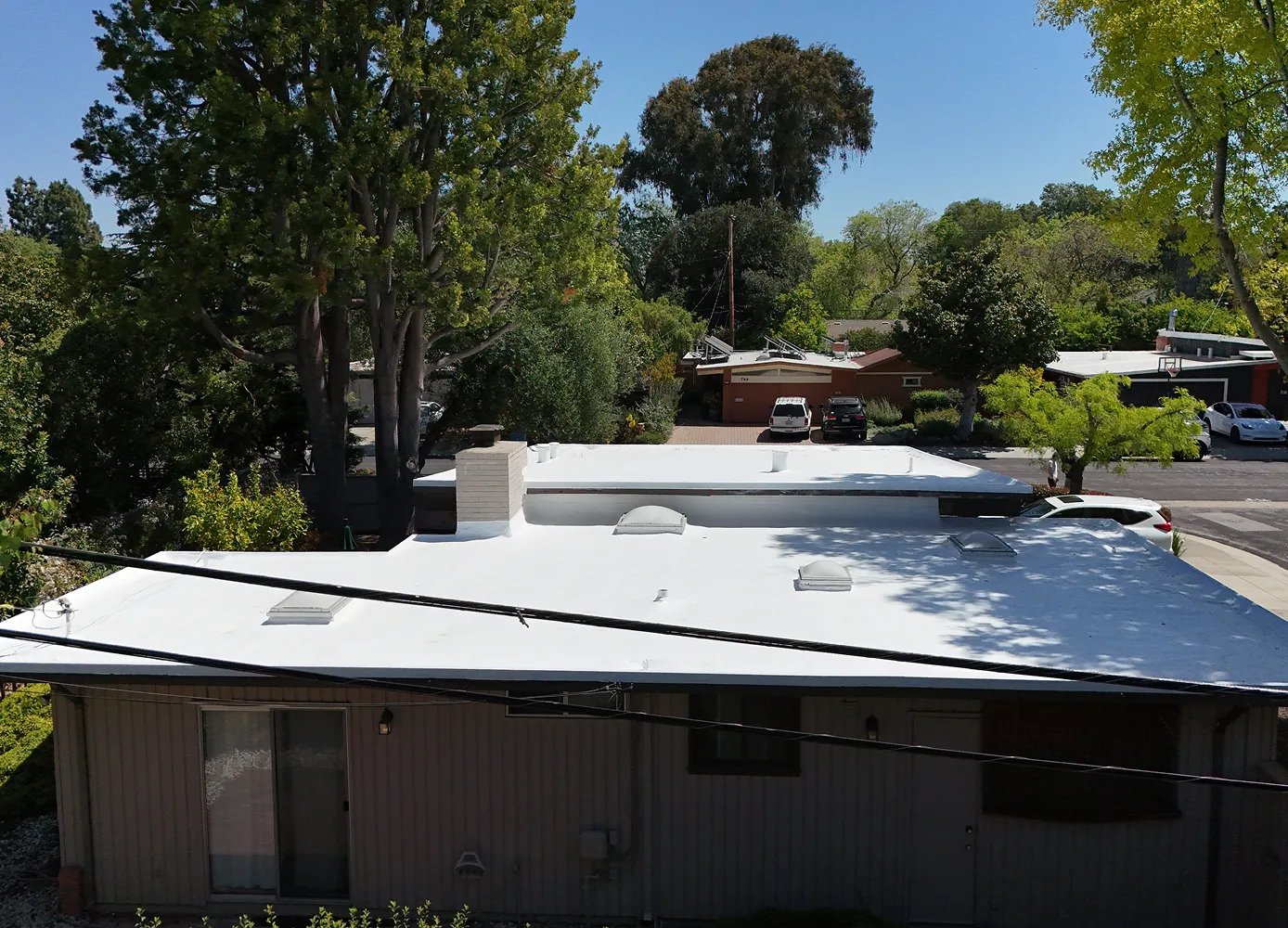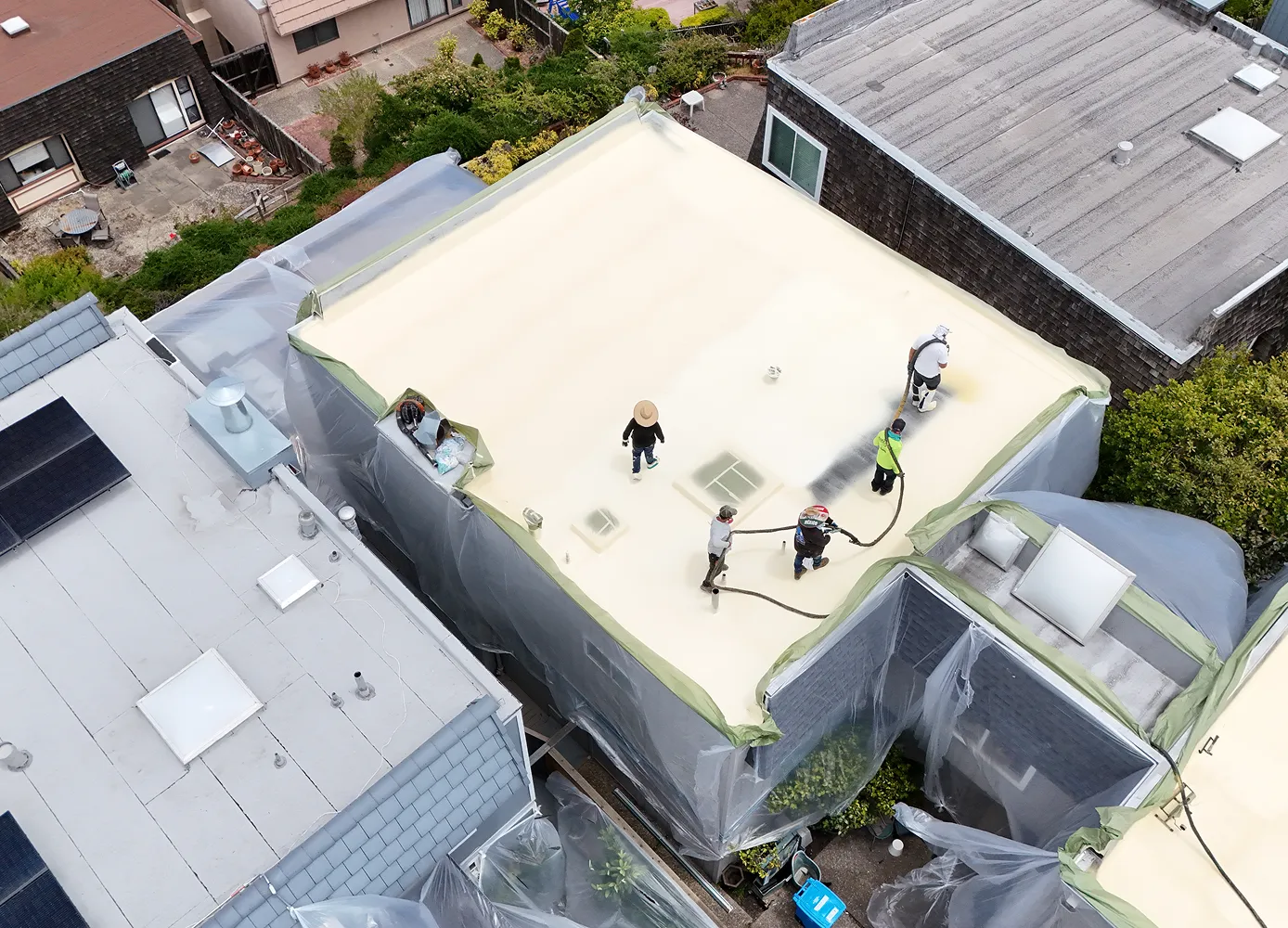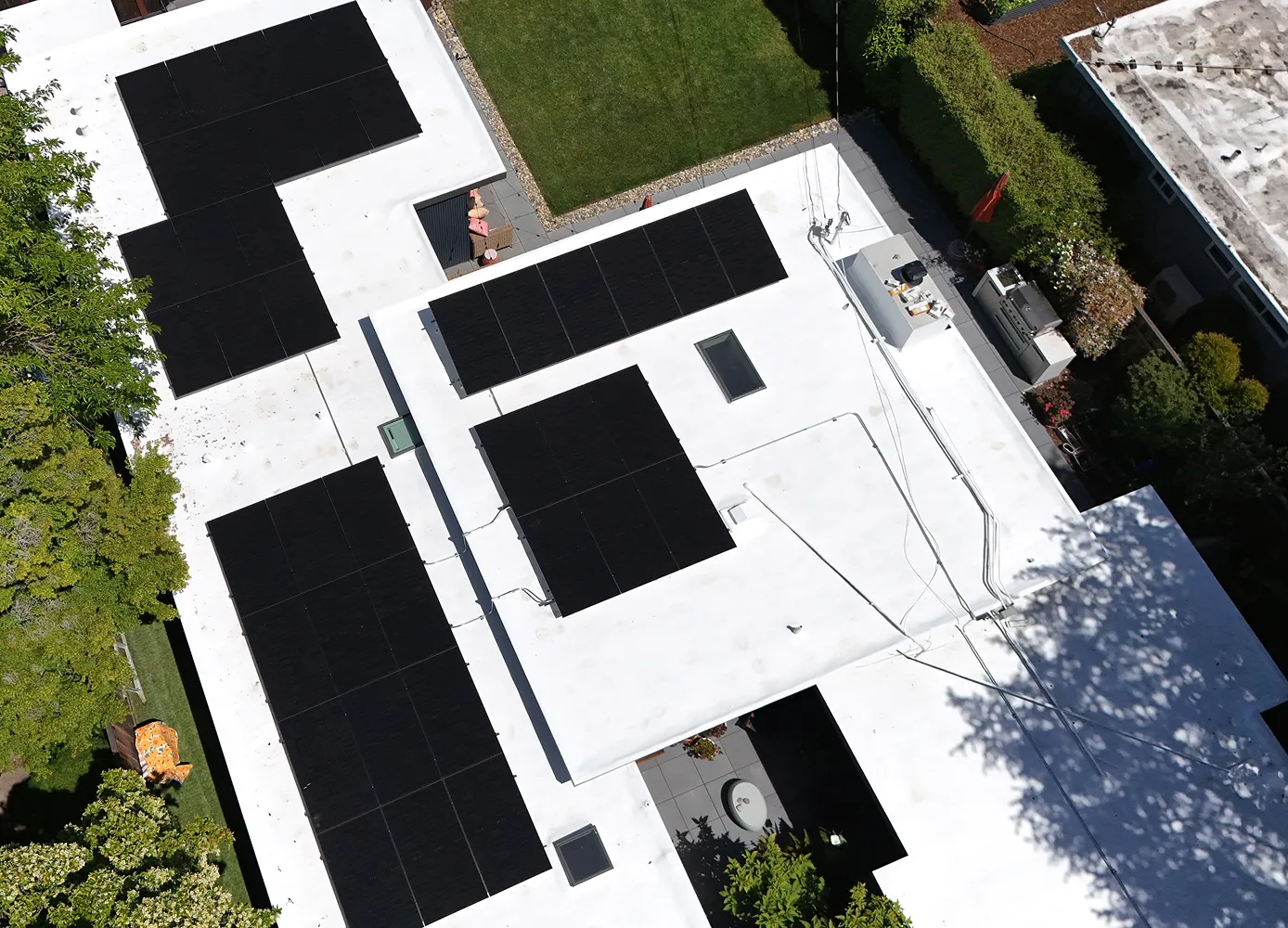Trustindex verifies that the original source of the review is Google. We installed a solar system with batteries with Dura-Foam last year. The system is working fabulously – it went through a winter with several power outages, and we usually don’t even know we have an outage until PG&E informs us. What a relief. Dura-Foam’s owner Trevor Hill was responsive, open to new ideas & willing to work with new partners. We integrated a battery system from FranklinWH as well as a SPAN sub panel to maximize the use of the solar power we are producing. Dura-Foam worked with the FranklinWH rep Trevor Gould to design and install a robust system that is transparent, efficient and most of the time completely self-reliant. One glance now tells me how much I produce, what I use, and what I use it for. Franklin’s aGate & SPAN were just the combination for someone like me who really likes data. Trevor Hill was patient and willing to answer any questions during the installation, the plan set was comprehensive, the work his team did was excellent, and they met the occasional construction challenge with the willingness and expertise to make it right. Cooperation with FranklinWH was clearly excellent. And finally, Trevor Hill even put together a full package of cohesive documentation for the CPA to document everything for the tax credit. 5 stars all around for the entire team and the products that make up our wonderful system.Trustindex verifies that the original source of the review is Google. I had contacted Durafoam and talked to Trevor about some minor roof work earlier this year. He was very responsive and got that done quickly. We eventually had them resurface our 20+ year old foam roof in summer and they were able to fit us on short notice. Always cheerful, Ali was a pleasure to work with. He and his crew were hardworking, as well as meticulous, and took time to protect the fruit and vegetable plantings in my backyard. Anthony, who's in charge of ops, was here a couple times and helped us resolve some logistical issue on the project. We are very happy with the quality of the roof work. Ali's team was able to accommodate our schedule and completed the job just as house guests AND a heat wave were expected at the same time! Thanks to our newly resurfaced roof, our home, which has no AC, weathered several extended heat waves of 90-100+ F this summer comfortably. While foam roofs are not cheap, they sure make severely weather more bearable! I totally recommend Durafoam to anyone looking for a great foam roof contractor!Trustindex verifies that the original source of the review is Google. They know what they are doing. Would recommend to friends and Family.Trustindex verifies that the original source of the review is Google. We recently needed a roof inspection on short notice for insurance purposes. Trevor from Dura Foam followed up quickly to our call. He helped us out, and gave us the documentation we needed to avoid a bad situation. We really appreciate their great response and workmanship!Trustindex verifies that the original source of the review is Google. Dura-Foam Roofing & Solar Center were really easy to work with! I would definitely recommend them to anyone with roofing issues. They responded to my inquiry and were able to get someone out to look at our roof quickly. I'll definitely reach out again in the future if we have any other issues that come up!Trustindex verifies that the original source of the review is Google. Dura-Foam Roofing & Solar Center did a fantastic job repairing our foam roof after it was damaged by an enormous fallen tree. Lusio, David, and Emiliano each performed different parts of the complicated job. They were all very professional and cordial. The work was performed efficiently, neatly and on schedule. And Isaac, the office staff person who coordinated our job, was a pleasure to work with. We couldn't have been happier. I highly recommend this company!Trustindex verifies that the original source of the review is Google. A Bay Area treasure. Look at the pictures and you will see the people that you will be working with. They pose like a family and that is exactly how it feels to work with them. 9 years and 6 months after my roof and solar project was installed, I had an issue with my solar generation. I called Dura-Foam and was surprised that they remembered me, my home and the installation. Anthony and Lusio came out and quickly identified the issue. Hard working and professional, they took the time to double-check everything and allay my concerns. They stand behind their work and did not charge me for the service call even though it has almost been 10 years since the install. If you have a roof (especially an Eichler) you need to give these folks a call. Honest, courteous and professional Dura-Foam is the right call for roofing and solar.Trustindex verifies that the original source of the review is Google. We were very satisfied with the service. We found the workers were very cordial and we appreciate it!
Icynene foam is a relatively new type of foam when compared to polyurethane foam. Icynene foam is quite different from polyurethane foam, both in structure and in applications. While polyurethane based foam is used in foam roofing, Icynene is used more for insulation type applications. Polyurethane foam must be sprayed, while Icynene foam can be poured or sprayed. Icynene foam also uses an open cell structure, while polyurethane foam uses a closed cell structure. A case study example of an Icynene foam application will be provided after our discussion of some key differences between Polyurethane and Icynene foam.
This image displays Icynene foam sprayed between a series of attic trusses. Effectively, icynene foam and polyurethane foam look nearly identical. However, polyurethane foam is 100% plastics based, while Icynene foam is 15% or more castor oil.
Polyurethane foam (commonly used in foam roofing and insulation) is based on petroleum byproducts, although there are ‘green’ versions, made partly from soy byproducts (instead of pure petroleum), which contain less HCFC and CFC gases. All types of sprayed polyurethane foam contain millions of tiny closed cells filled with HCFC or CFC gases. A blowing agent agitates the plastics causing the bubbles to form, and the material hardens within about one minute. Sprayed polyurethane foam is inherently water resistant due to its closed cell structure.
Polyurethane foams are known for qualities including: light weight, resiliency, and insulation quality.
Icynene foam is different because it is based on Castor oil (not plastics, also known as petroleum by-products) and it does not trap air in the cells. The resulting Icynene cells are open–which means no gases are trapped in the cells, so air-infiltration is possible. Due to air and vapor movement, Icynene foam does not insulate as well as closed cell foam. In contrast, closed cell foam completely traps vapors, completely blocking air migration–which enhances the insulating capacity of polyurethane foam. Icynene foam is more ideal for applications where some air or vapor must pass through the foam, while polyurethane foam completely blocks air and vapor transmission.
Although Icynene foam has lower R-Values than polyurethane foam (less thermal resistance and less insulation capacity), it still has valuable uses for insulation depending on the scenario. R-Value is a benchmark for insulation quality, and generally 1 inch of wood equates to an R-Value of 1. In contract one inch of medium density polyurethane foam (typically used for foam roofing as well as insulation) has an R-Value between 7 and 8. In other words, one inch of polyurethane foam is as effective an insulator as 7-8 inches of wood. In contrast, Icynene foam usually has R-Values of 3.6 to 4. The R-value of Icynene foam is lower than polyurethane foam due to the open cell structure. Aside from the base thermal resistance indicated by R-values, Icynene foam does not block vapor transmission like polyurethane so the actual insulation effectiveness is substantially less than the R-value discrepancy indicates.
The reason why both types of foam have R-Value ranges (e.g. polyurethane foam ranges from 7 to 8 normally) instead of specific R-Values is that spray foam is unique in that it is manufactured on site. Relative humidity, temperature, substrate, wind and other factors can all result in varying R-values. Generally, polyurethane foam must be sprayed in dry, warm conditions. Icynene foam however, has an advantage, because some formulations can be sprayed, even in moist, damp–even wet conditions (see the case study below). So although polyurethane foam must be sprayed in dry conditions, Icynene does not have this restriction due to the fact that there are water blown formulations of Icynene.
As already mentioned, Icynene can be sprayed in damp conditions (in an extreme situation). Icynene is also more flexible than polyurethane foam (rigid forms of polyurethane foam are used for both insulation and foam roofing). Icynene can also be ‘poured’ (not just sprayed). Sometimes installers drill holes in walls, then pour Icynene foam inside to fill otherwise impossible to insulate areas. Although Icynene is not impervious to air infiltration, it does trap air much more effectively than cellulose or fiberglass (despite the open cell structure of Icynene).
Icynene foam can soak up water just like fiberglass. Extreme care must be taken to avoid a situation where moisture is retained close to wood and other building and structural materials. Moisture can migrate through Icynene to condense on cold surfaces. This destroys insulating value.
Sprayed polyurethane foam is the only insulating material that does not soak up water or allow easy moisture vapor migration to pass through.
Sprayed polyurethane foam’s rigid nature increases structural rigidity and strength significantly.
Icynene is a newer technology than polyurethane foam; polyurethane foam has been used both for foam roofing and insulation for decades. Icynene does have some advantages vs polyurethane foam; pouring, damn substrates, etc. However, all of these applications are for insulation and not for foam roofing applications. It is newer and not as well tested as polyurethane foam. And if installed incorrectly, there are reports of Icynene foam creating toxic odors. This is not cited as an inherent disadvantage, so much as an incorrect installation issue (new products often have installation issues–like solar panels did a few decades ago when usage exploded). Icynene is also more expensive than polyurethane foam, but perhaps more environmentally friendly (Castor oil vs petroleum base). Not to say that polyurethane foam roofing or insulation is not environmentally friendly, both are very green products. Icynene is just more environmentally friendly, but only applicable to insulation usages, due to the open cell structure. Icynene does have some very interesting application specific uses, see our case study below for a great example.
Boulineau’s Grocery store Myrtle Beach, South Carolina had some unique problems that required a creative insulation solution. A series of un-insulated walk-in freezers on their second floor had no insulation. This created a myriad of problems due to constant big drops of condensation dripping on to the floor, then eventually seeping through the floor and into ceiling tiles, creating ugly mold and discoloration right above the shopping area of the grocery store.
Boulineau’s Grocery store needed insulation between the first and second floor, however, standard insulation such as fiberglass or cellulose was useless due to the fact that water was constantly seeping through. When the hot South Carolina air came into the store from the outside, the un-insulated freezers created a constant and perpetual heavy dew, which constantly dripped. The corrugated steel substrate was littered with patches of calcification and rust.
Ugly aesthetics aside, the constant dripping created a hazard for shoppers who might fall and slip. This created some potential liability issues for the store as well (no one likes getting sued). The owner of Boulineau’s found Spray-seal Insulation through their local yellow pages. Mark Winslow, a veteran of polyurethane foam insulation (20 years experience) was assigned to the job.
Mark Winslow of Sprayseal Insulation had to first assess the situation and determine what type of insulation could deal with the constant condensation issues in a permanent, cost effective way. He noted the constant condensation dripping from un-insulated freezer pipes, the ugly stains and customer slipping hazards as well as the size of the project. About 600 square feet total area would require insulation coverage. The store management did not allow Mark to build a scaffold because this would block shoppers from using the store. Also, the walk-in freezers could not be shut down (food was stored here)–which meant, the condensation would continue, even during the job. The 90% humidity of the Myrtle Beach South Carolina air also meant, that the condensation would continue around the walk-in freezers store even during installation.
In order to make the installation happen without a scaffold, only one ceiling tile would be removed at a time by the 1-man team. The prep work and subsequent insulation would be done from a top a 20 foot ladder with plastic draped below to trap any vapors, and allow customers to continue shopping, even during the installation. Since only 1 ceiling tile was removed at a time during installation, the remaining ceiling tiles would help catch any over-spray. A test spray confirmed that no odor would permeate the store so Winslow was given the go-ahead to start the job, while the store continued to remain open for business. The corrugated steel substrate between the second and first floor was prepared with Ospho, a rust inhibiting coating. With a brush, Mark Winslow applied Ospho to the corrugated steel ceiling deck. Any rust left on the steel was chemically altered by the Ospho changing it into iron phosphate, a hard black substance.
Mark Winslow chose water-based Icynene foam as the insulation product. Mark Winslow, a member of Icynene Dealer Network since 1997, was familiar with Icynene foam and he knew it would be effective for the unique requirements of the project. The water based Icynene solution used could be sprayed onto a damp substrate but still seal. The Icynene foam would also be flexible enough to stay firmly adhered despite heavy floor vibration due to both shoppers, and store employees. Winslow used an air gun to clear off most of the water, then sprayed the Icynene foam to a 3″ depth with just one pass at a time with a Gusmer H-2000 and a Probler Gun. Winslow stated he used only one full pass because this allowed the foam to adhere better than flashing, which is more effective with cold or oily substrates. Winslow wore transparent headgear and a full fresh air supply during the spray foam installation.
The store is now cool and dry despite hot outdoor conditions, the Icynene foam effectively insulated the freezer pipes, preventing new condensation from forming. The Icynene foam also adhered to the substrate well, and is reported to still be functioning and effectively preventing condensation, even a few years after the installation. The Icynene foam effectively created a barrier between the most warm outdoor air and the cool walk in freezers.
These examples highlight why foam roofing is not just an alternative but the preferred solution for businesses looking for unmatched durability, energy efficiency, and cost savings.



Trusted roofing and solar solutions built for strength, efficiency, and long-term protection tailored to your home’s needs.
Get important tips on keeping your roof efficient and safe in the Bay Area!
© 2025 All Rights Reserved Dura-Foam